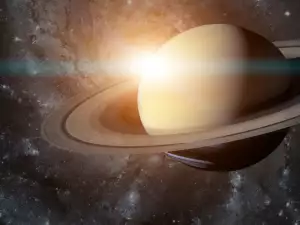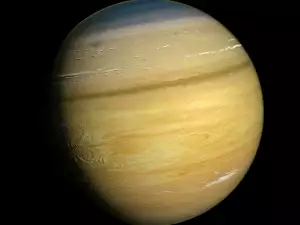NASA announced that they've found an entire ocean on one of Saturn's moons. The satellite in question is Enceladus, which the Cassini space probe found water ice and vapor on back in 2005, as they were ejected into space from parallel cracks near the south pole - the so-called "tiger stripes".
Since then, scientists have known that the satellite has water, but planetary scientists were faced with the question of what the source was of the ice and vapor. In the years following the discovery, there were numerous observations of it using the Cassini spacecraft, Hubble Telescope and other instruments.
In their investigations, scientists found evidence of the existence of an ocean beneath the surface of Enceladus. Initial data pointed to the presence of an ocean in the planet's south pole region only.
Thanks to Cassini's finds, scientists learned that the ocean covers the entirety of the satellite, separating its hard core from the ice and soft rocks at the surface. Matthew Tiscareno and his colleagues from Cornell University have come to this conclusion after looking at the slight deviations of Enceladus along its orbit.

They have determined that the magnitude of these quakes is significantly greater, which means that there's a higher probability for the existence of a deep ocean surrounding the entire planet, rather than the initial suggestions of the presence of a small ocean around the south pole.
Scientists are now clear about the source of the vapor and ice on Enceladus, as well as the size of its ocean. But astronomers still face the puzzle of how the ocean of Saturn's moon remains in a liquid state.
In the past they theorized that the ocean's water was heated as a result of the attraction between Saturn and Dione, leading to the contraction and expansion of Enceladus's porous core.
Tiscareno and his coworkers postulate that these tidal forces are insufficient to maintain the ocean in a liquid state. And not only this - the water of the moon has a high temperature, as evidenced by the hot geysers on its surface.












